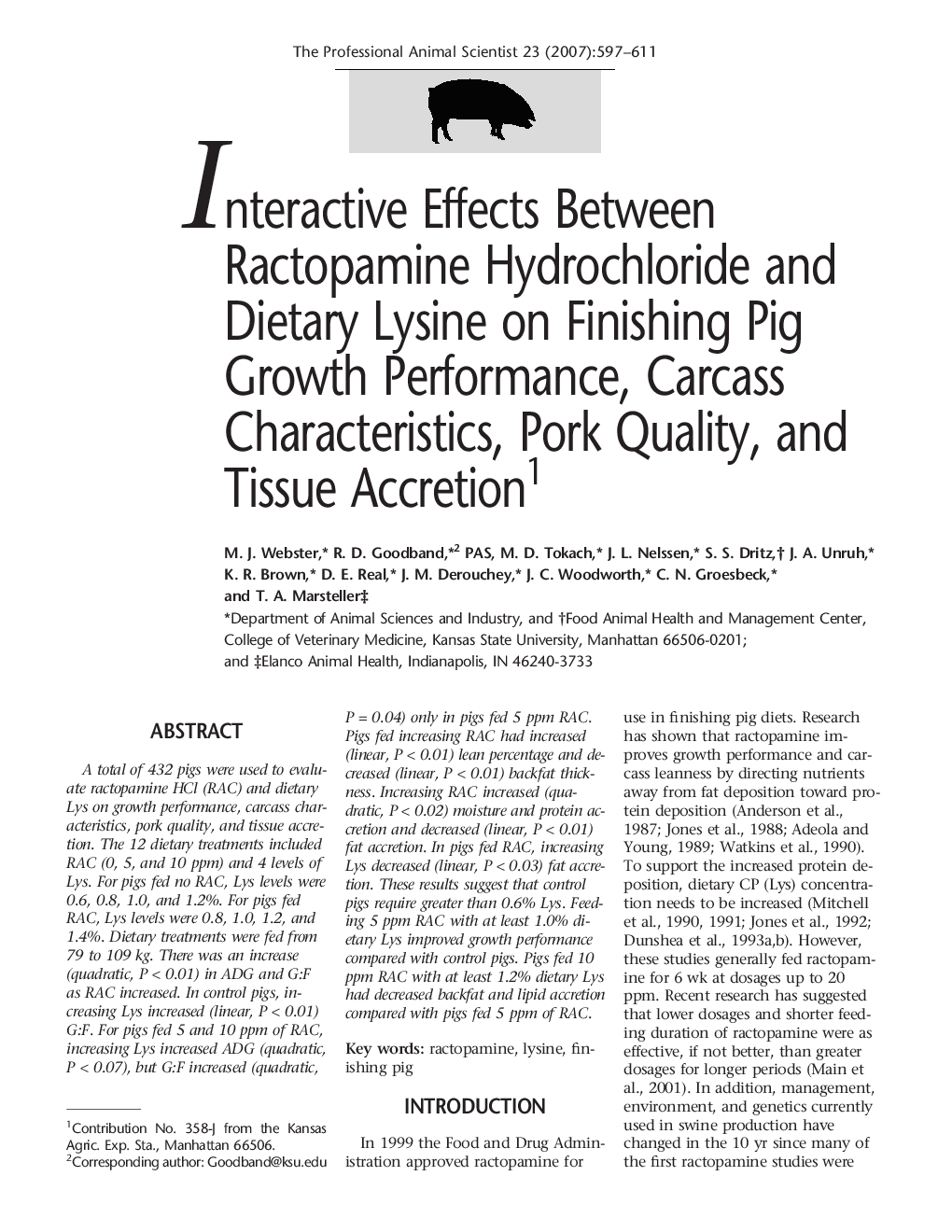| Article ID | Journal | Published Year | Pages | File Type |
|---|---|---|---|---|
| 2454155 | The Professional Animal Scientist | 2007 | 15 Pages |
Abstract
A total of 432 pigs were used to evaluate ractopamine HCl (RAC) and dietary Lys on growth performance, carcass characteristics, pork quality, and tissue accretion. The 12 dietary treatments included RAC (0, 5, and 10 ppm) and 4 levels of Lys. For pigs fed no RAC, Lys levels were 0.6, 0.8, 1.0, and 1.2%. For pigs fed RAC, Lys levels were 0.8, 1.0, 1.2, and 1.4%. Dietary treatments were fed from 79 to 109Â kg. There was an increase (quadratic, P < 0.01) in ADG and G:F as RAC increased. In control pigs, increasing Lys increased (linear, P < 0.01) G:F. For pigs fed 5 and 10Â ppm of RAC, increasing Lys increased ADG (quadratic, P < 0.07), but G:F increased (quadratic, P = 0.04) only in pigs fed 5Â ppm RAC. Pigs fed increasing RAC had increased (linear, P < 0.01) lean percentage and decreased (linear, P < 0.01) backfat thickness. Increasing RAC increased (quadratic, P < 0.02) moisture and protein accretion and decreased (linear, P < 0.01) fat accretion. In pigs fed RAC, increasing Lys decreased (linear, P < 0.03) fat accretion. These results suggest that control pigs require greater than 0.6% Lys. Feeding 5Â ppm RAC with at least 1.0% dietary Lys improved growth performance compared with control pigs. Pigs fed 10Â ppm RAC with at least 1.2% dietary Lys had decreased backfat and lipid accretion compared with pigs fed 5Â ppm of RAC.
Keywords
Related Topics
Life Sciences
Agricultural and Biological Sciences
Animal Science and Zoology
Authors
M.J. Webster, R.D. Pas, M.D. Tokach, J.L. Nelssen, S.S. Dritz, J.A. Unruh, K.R. Brown, D.E. Real, J.M. Derouchey, J.C. Woodworth, C.N. Groesbeck, T.A. Marsteller,
